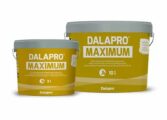Summer Sales: A Comprehensive Guide to Summer Clearance

Introduction
In the world of retail, summer sales or ”sommarrea” in Swedish, have become a highly anticipated event for shoppers. This article aims to provide a thorough overview of summer clearance, including its definition, types, popularity, and historical significance. By delving into quantitative measurements and comparing various summer sales, readers will gain insight into the evolution and advantages of these shopping events.
What is Summer Clearance?

Summer clearance, also known as ”sommarrea,” is a seasonal sale that takes place during the summer months when retailers aim to clear out their existing inventory to make room for new collections. It offers an excellent opportunity for shoppers to find discounted items across various product categories. From clothing and accessories to electronics and home décor, summer clearance caters to a wide range of consumer needs.
Types of Summer Sales
Summer clearance comes in different forms, each tailored to suit diverse customer preferences. The most common types include:
1. End-of-season Sales: Many retailers offer significant discounts on recent collections as the current season comes to an end. This type of summer clearance presents an opportunity for shoppers to update their wardrobes or purchase items for future use at reduced prices.
2. Warehouse Sales: Some retailers organize warehouse sales during the summer months to clear excess inventory. These sales often feature discounted prices on a wide range of products from various brands, attracting bargain hunters looking for great deals.
3. Online Exclusive Sales: As e-commerce continues to thrive, online retailers often hold exclusive summer clearance sales on their websites. These sales may offer additional perks like free shipping or exclusive discounts for online shoppers.
Popularity and Quantitative Measurements
Summer clearance sales have gained significant popularity worldwide, attracting millions of consumers eager to take advantage of discounted prices. Quantitative measurements further demonstrate the impact of these sales events:
1. Increased Footfall: During summer clearance periods, many retailers experience a notable increase in store traffic as shoppers seek out the best deals. This surge in footfall is indicative of the widespread appeal and popularity of summer sales.
2. Sales Volume: Retailers measure the success of summer clearance through higher sales volumes. Comparative sales analyses between clearance and non-clearance periods provide insights into the effectiveness of these sales events.
3. Online Engagement: The advent of e-commerce has transformed summer clearance sales into digital phenomena. Online metrics, such as website traffic, conversion rates, and social media engagement, quantify the reach and influence of these sales among online shoppers.
The Distinctions Between Summer Sales
While summer clearance events share the common goal of offering discounted products, there are significant distinctions among them. These differences contribute to the unique shopping experiences and opportunities available to consumers:
1. Retailer Focus: Some summer sales exclusively feature products from a specific retailer, allowing customers to explore a particular brand’s offerings at reduced prices. These curated sales provide a focused shopping experience.
2. Product Selection: Depending on the nature of the sale, certain types of products may be more prevalent than others. For example, clothing retailers may primarily offer discounted summer apparel, while electronics stores may focus on clearing out last season’s electronic gadgets.
3. Timing and Duration: Summer sales vary in terms of their timing and duration. While some events last for a few days, others extend for several weeks or even months. The duration and timing of the sale may influence consumer behavior and the urgency to make purchases.
Historical Review of Pros and Cons
Examining the historical context of summer clearance can shed light on its advantages and disadvantages:
1. Advantages:
– Bargain Hunting: Summer sales offer an opportunity for shoppers to snag great deals and save money on their desired products.
– Clearing Inventory: Retailers benefit from summer clearance events by swiftly clearing out older inventory, making way for new collections and reducing storage costs.
– Improved Cash Flow: Higher sales volumes during summer clearance contribute to improved cash flow for retailers, ensuring a healthy business operation.
2. Disadvantages:
– Limited Stock: As summer clearance sales progress, popular items may sell out quickly, limiting options for latecomers.
– Impulse Purchases: The allure of discounted prices may lead some shoppers to make impulsive purchases, which they may later regret.
– Crowded Stores: The popularity of summer clearance sales often leads to crowded stores, resulting in longer wait times and a less pleasant shopping experience.
Conclusion
In conclusion, summer sales or ”sommarrea” represent a significant shopping phenomenon for consumers worldwide. Through a comprehensive examination of summer clearance, this article has provided an in-depth understanding of its various types, measurements, distinctions, and historical advantages and disadvantages. Whether shoppers are seeking trendy apparel or discounted electronics, summer sales offer a chance for them to indulge in wallet-friendly shopping experiences.
















































